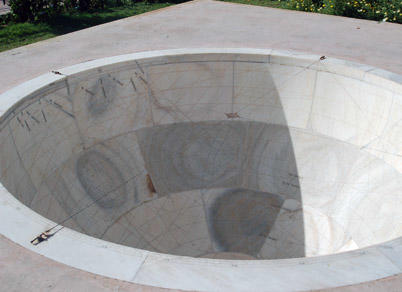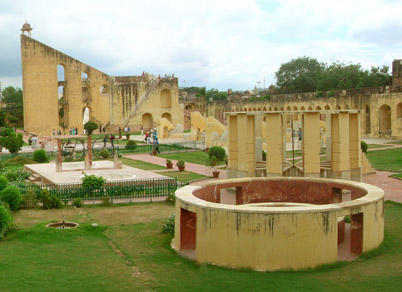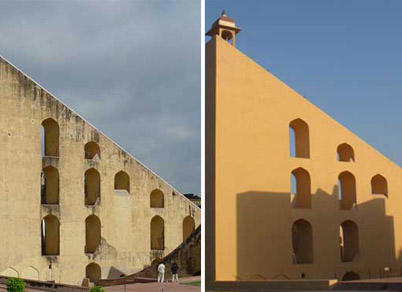Jantar Mantar
2008 World Monuments Watch
The Jaipur astronomical observatory, Jantar Mantar—thought to have been built by the enlightened ruler Sawai Jai Singh II in 1729—is one of the world's most accurate pre-modern observatories, and attests eighteenth-century efforts to improve understanding of planetary and other cosmic movements. One of five observatories built by the same monarch in northern India—the others are in Delhi, Ujjain, Mathura, and Varanasi—the one in Jaipur is the largest and the best known. Unfortunately, the observatory began to deteriorate quickly following its construction. By the close of the nineteenth century, it had fallen into ruin. In 1901, Maharaja Ram Singh embarked on the restoration and reconstruction of the observatory. The remains of this reconstruction are what we see today. Some of the instruments, or yantras, are still in use to forecast weather and crop yields. These include constellation and meridian observatories and a giant sundial. Located in the administrative heart of Jaipur, the site is also used as a public park and outdoor museum. The reconstructions of 1901 and subsequent efforts to maintain the site during the British period and the decades that followed have helped avoid major structural damage to the yantras. However, the site has begun to deteriorate once again as a result of weathering, vandalism, and normal wear and tear of materials. The most urgent issue is the loss of the fine, calibrated markings on the instruments, which are eroding. These need to be restored in order to protect the historic function of these extraordinary instruments.
Since the Watch
Watch listing in 2008 and subsequent advocacy efforts spurred the Rajasthan government to restore Jantar Mantar. The conservation is now completed, and this magnificent complex will continue to awe visitors with its scale and accuracy. In 2010, the site was inscribed on the UNESCO World Heritage List.



